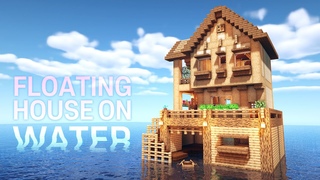Wooden Water Wheel in Europe
Free video about water wheels. This free video was created for you by and can be used for free under the creative commons license with the attribution of as the original author of this water wheels video.
Thank you for supporting the creative commons movement !!
In the industrialized regions water wheels today have little or no economic significance. Most are available in numerous mills converted to museums, some drive smaller generators and serve the electricity. Partial water running wheels for decorative purposes without energy. In the castle Nymphenburg in Munich water wheels but for over 200 years now, its still the pumping stations for the two fountains in front of the castle. An important difference between water wheels and turbines : Water wheels can not control when and with widely varying amounts of water without significant loss of efficiency run.
Most water wheels are in the developing countries of Africa and Asia as indispensable tools especially the agriculture available. The world’s available power potential of water wheels in the range expected by some reliable estimates terawatt lie. Typically, a water provides a driving power in the one to two digit kilowatt range. It represents a contribution to the sustainable use of water power is because it due to its low power and decentralized arrangement requires only a small impact on nature. At the beginning served water wheels of irrigation in agriculture, as a bucket for lifting water, Such waterwheels since before the Christian era in the Hellenistic states and in the Roman Empire, and later in India and China widespread.
In undershot water wheels, the water flows under the wheel by a goiter. The goiter (’K’ in the schema sketch to midle-shot waterwheel) is a guide which is adapted to the wheel. It prevents water below and to the side of the blades flows without driving it. Due to the rather simple construction undershot water wheels are the oldest form of water wheels. A undershot waterwheel resembles a undershot, but with the water wheel that is immersed in an (almost) flat river and is driven solely by the flow rate. Compared to the undershot waterwheel is here only the natural flow rate of the water body of concern, an increase in available energy by an artificial slope in the water (along the water wheel or by a barrage before selbigem) does not occur.
The waterwheel was in the course of power generation based on renewable energy Renaissance experience. Water wheels are characterized by a cost-effective implementation in existing channels (eg irrigation canals), where the structural and technical size limits of water wheels (drop height max. ≈8-10 m, max flow. ≈10 m³ / s) use in the field of small pretend and micro hydropower. Another extension was the waterwheel, receptacles and combination blades, permitting extensive irrigation near rivers. In Syria, the great waterwheels of Hama can measure up to 21 meters in diameter. They can be fed by the current strength or by an animal, human or a motor.
The bulk of the water wheels is now in developing countries in Africa and Asia, where they still are an indispensable tool. Especially agriculture without waterwheels even today unthinkable. In industrialized areas most waterwheels serve today nevertheless no more for energy, but rather for nostalgic purposes. Where a water right is available and adequate, uniform hydropower is present, the energy through turbines operated. Therefore in industrialized regions, the economic significance of waterwheels today only slight. Therefore, most water wheels are now in the numerous museums, some float and small generators to serve the power supply.
The invention of the waterwheel was a milestone in the technical development of mankind, since by harnessing hydropower opposite muscle very much more mechanical energy could be made available. When water paddle wheels are water buckets are applied directly to the water wheel with its vanes, which is driven by the flow. It is, therefore, no power transmission through the shaft is necessary. At the highest point of the wheel empty the water bucket into a collecting basin, where it walks into a water kanaal. In the Middle Ages this technology was also in Central Europe its appearance, but not really in the Netherlands because the Dutch had a powerful means to generate energy, the windmill. They have stood back in Europe for several decades, and they are often replaced by modern irrigation systems. In Möherdorf in Germany are nine historic water paddle wheels in operation already before the beginning of the 15th century were in use.
Thank you for supporting the creative commons movement !!























